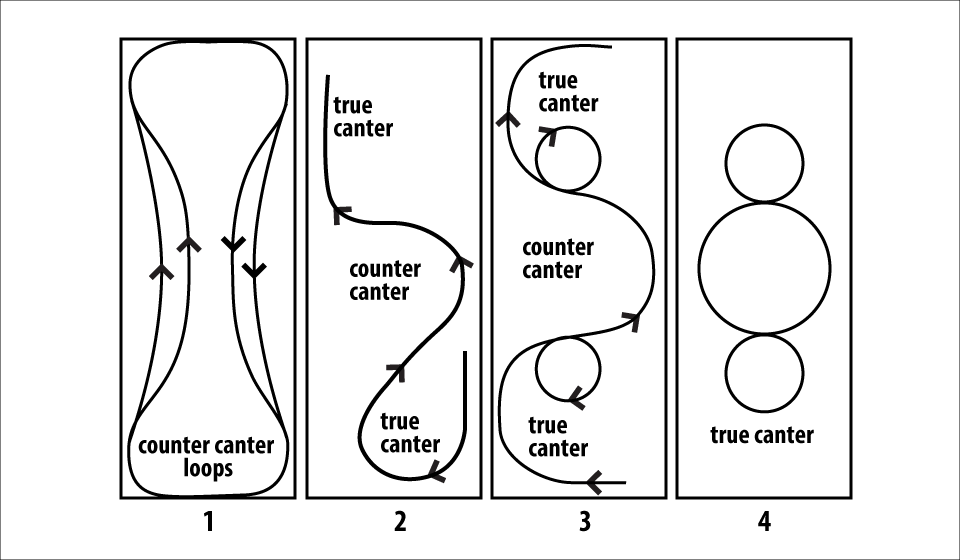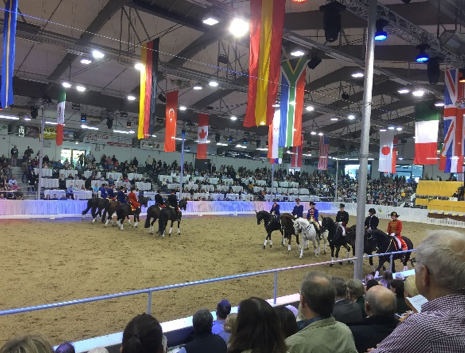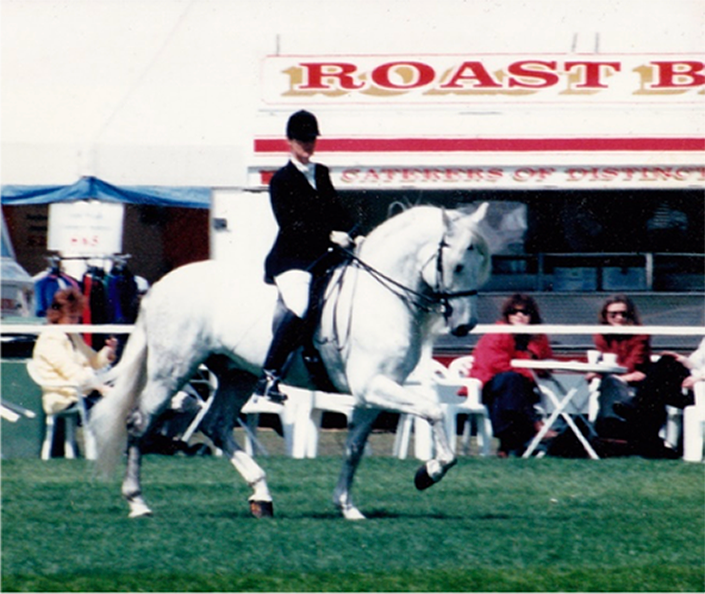Counter Canter
When your horse can keep a good balance in true canter, it is time to work on the counter canter. It is when the horse is cantering on the opposite lead from the way he is travelling. This is needed by dressage and jumpers alike, for the teaching of flying changes. It also increases suppleness and the lowering of the hind quarters.
When you start, you need a soft flexion onto the side you are going to canter, and you ask for a collected canter on the outside leg. The connection on the outside rein must be supportive as it holds the head up, and is also your turning rein. The outside leg back holds the horse on the lead you have asked for.
Inside leg stays close to the girth and the inside hip stays forward, with slightly more weight over the inside seat bone to maintain the canter. If the horse breaks or changes, then the outside leg and outside rein have to be more secure, with a shortened collected canter.
The diagrams give you four counter canter exercises to practise. The loops along the long side are the easiest to start with, and the last one is very good for setting up the flying change.



